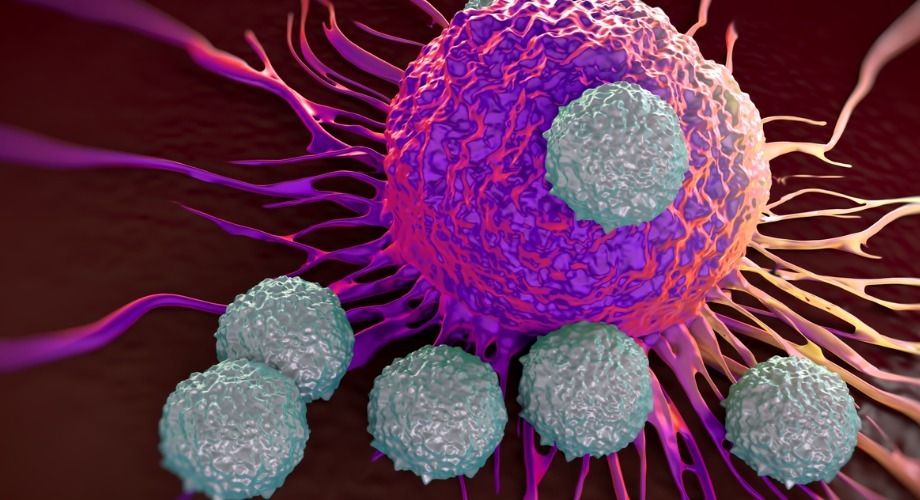
Unleashing the immune system’s ‘STING’ against cancer
A small molecule that activates the immune protein STING shows promising results against tumors in preclinical tests.
August 20, 2020
LA JOLLA, CA — Scientists at Scripps Research and Calibr, the institute’s drug discovery division, have discovered a molecule that can activate a natural immune-boosting protein called STING to help patients fight cancer.
The findings, which exemplify the interplay between Calibr and the basic science that makes Scripps Research a renowned center of innovation, mark a key advance in the field of oncology, as the STING protein is known for its strong antitumor properties.
STING (short for STimulator of INterferon Genes) marshals the immune system against viral and cancerous invaders and, because of its role in promoting antitumor immunity, has garnered enthusiastic interest from drug developers.
However, STING’s natural activators in the body are unstable DNA-related molecules that do not last long in the bloodstream. That has hindered the development of treatments based on them, and has prompted a search for a hardier STING-activating small molecule—one that can circulate in the blood and work against tumors “systemically,” wherever they may exist in the body.
The Scripps Research and Calibr scientists – whose findings were published in Science on August 20 – characterized a set of small molecules discovered and developed at Calibr, and extensively studied in the Scripps Research labs of Luke Lairson, PhD, and John Teijaro, PhD. The Calibr team, led by Mike Petrassi, PhD, vice president of Medicinal Chemistry at Calibr, brought to bear medicinal chemistry and pharmacology expertise to create an optimized drug candidate that, when delivered systemically into mice, greatly reduced the growth of an aggressive form of melanoma.
The discovery raises the possibility of a safe and effective drug that could activate STING and suppress a wide range of cancers.
“A systemic STING-activating molecule could have considerable utility, and not only as a therapeutic for cancer and infectious disease, but also as a probe for studying STING-dependent antitumor immunity and a host of other STING-related biological processes,” says Lairson, a co-senior author and associate professor in the Department of Chemistry at Scripps Research.
The scientists found that their optimized STING-activator, which they named SR-717, appears to activate the STING protein in the same way as its natural activators in the body. Using X-ray crystallography to image the interaction at atomic scale, they showed that both SR-717 and a known natural activator bind to the same site on STING and induce the same shape-change in the protein.
In an animal model of aggressive melanoma, SR-717 dramatically suppressed tumor growth, prevented metastasis, induced the presentation of tumor molecules to the immune system, and robustly boosted levels around tumors of CD8+ T cells and NK cells—both of which are known to be among the immune system’s heaviest antitumor weapons. At this effective dose, there was no evidence of significant adverse side effects on the animals.
The researchers are continuing to study SR-717, with the hope of developing it into a new anticancer treatment that could be used alone or in combination with other treatments.
“Antitumor activity of a systemic STING-activating non-nucleotide cGAMP mimetic” was written by Emily Chin, Chenguang Yu, Vincent Vartabedian, Ying Jia, Manoj Kumar, Ana Maria Gamo Albero, William Vernier, Sabrina Ali, Mildred Kissai, Daniel Lazar, Nhan Nguyen, Laura Pereira, Brent Benish, Ashley Woods, Sean Joseph, Alan Chu, Kristen Johnson, Philipp Sander, Francisco Martinez-Pena, Eric Hampton, Travis Young, Dennis Wolan, Arnab Chatterjee, Peter Schultz, Michael Petrassi, John Teijaro, and Luke Lairson, all of Scripps Research during the study.
For more information, contact press@scripps.edu

